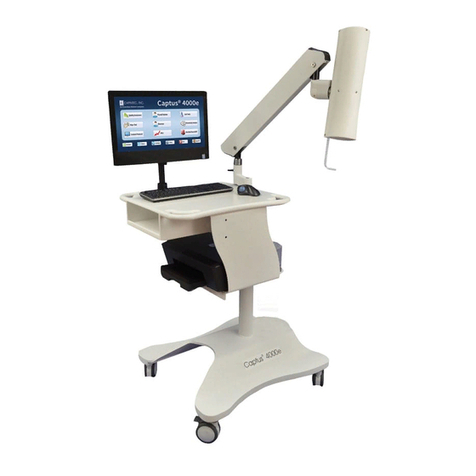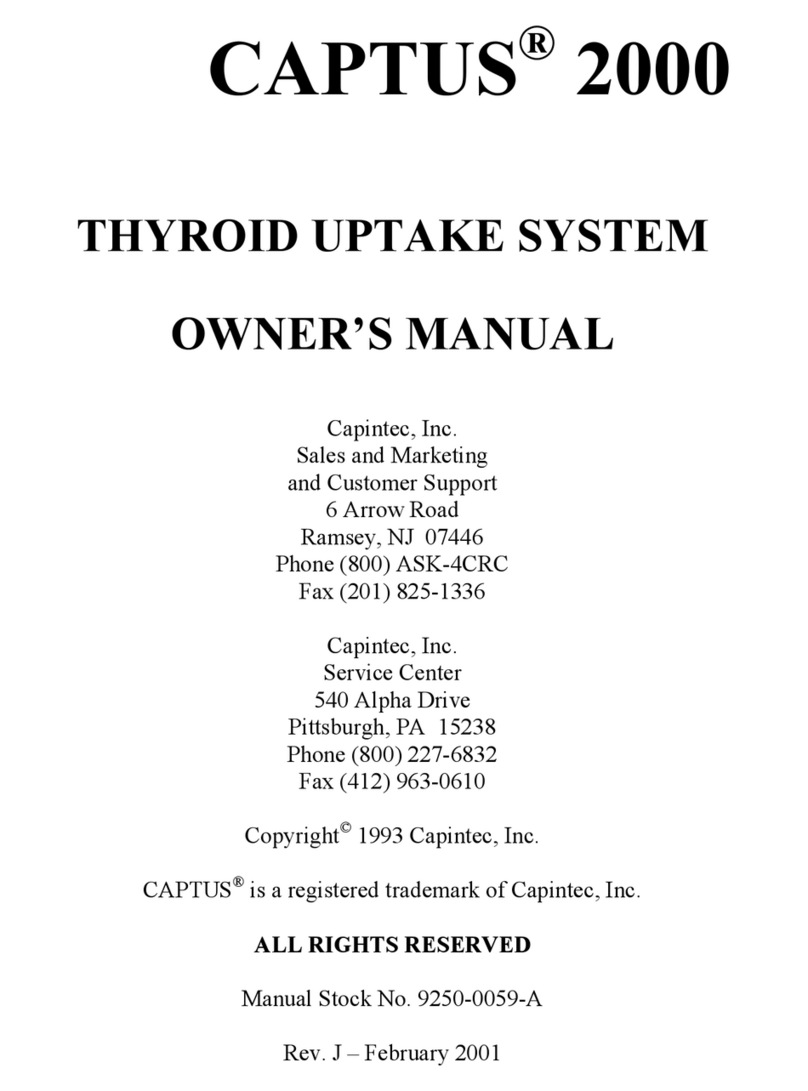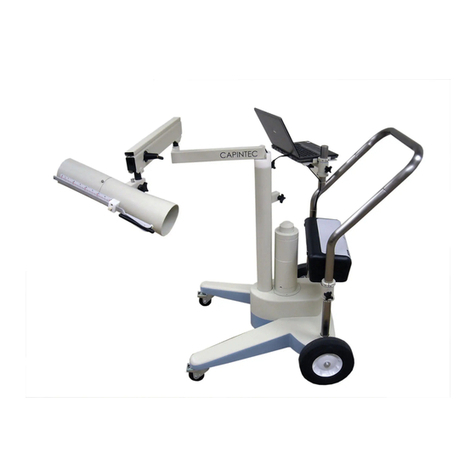
CAPINTEC, INC. CAPTUS®600
Lab Tests – Urine......................................................................................................2-9
Lab Tests – Blood...................................................................................................2-10
Staff Bioassay..............................................................................................................2-10
GENERAL OPERATING OVERVIEW..................................................................................3-1
TURN ON SYSTEM ..........................................................................................................3-1
LOG-ON PASSWORD ......................................................................................................3-1
SYSTEM FUNCTIONS......................................................................................................3-2
PROBE SCREEN..............................................................................................................3-3
WELL SCREEN.................................................................................................................3-3
HOME Key ........................................................................................................................3-4
Changing from PROBE to WELL Functions......................................................................3-4
Changing from WELL to PROBE Functions......................................................................3-4
CONTRAST.......................................................................................................................3-4
SCREEN DIMMER............................................................................................................3-4
FUNCTION Keys...............................................................................................................3-5
PRINT Key ........................................................................................................................3-5
UTIL Key ...........................................................................................................................3-5
KEYBOARD ......................................................................................................................3-6
BSP Key............................................................................................................................3-6
PROMPT...........................................................................................................................3-6
ARROW Keys....................................................................................................................3-6
ALPHANUMERIC ENTRIES .............................................................................................3-7
Entries with Number and Letters ...................................................................................3-7
SPACE Key ...................................................................................................................3-7
Decimal Point.................................................................................................................3-7
BLANK ENTRIES..............................................................................................................3-8
INVALID VALUES .............................................................................................................3-8
ENTERING DATE and TIME.............................................................................................3-8
SETUP PASSWORD ........................................................................................................3-8
YES or NO Answers..........................................................................................................3-9
COUNTING METHODS ....................................................................................................3-9
MEASUREMENT ERRORS............................................................................................3-10
HIGH VOLTAGE ADJUSTMENT ....................................................................................3-10
OFFSET VOLTAGE ADJUSTMENT...............................................................................3-10
DISPLAY CONTRAST ADJUSTMENT ...........................................................................3-11
DATA ENTRY INPUT LIMITS .........................................................................................3-11
Thyroid Uptake Protocols ............................................................................................3-11
Thyroid Uptake Measurements....................................................................................3-11
Cs137 Standard...........................................................................................................3-11
Bioassay Protocol........................................................................................................3-12
Additional Nuclide........................................................................................................3-12
Blood Volume ..............................................................................................................3-12
RBC Survival Measurement ........................................................................................3-12
Patient Demographics .................................................................................................3-12
Wipe ............................................................................................................................3-12
Description..............................................................................................................3-12
Background Counting..............................................................................................3-12
Generic Conversion Factors ...................................................................................3-12
Trigger Levels .........................................................................................................3-13
TOC-ii TABLE OF CONTENTS November 07






























